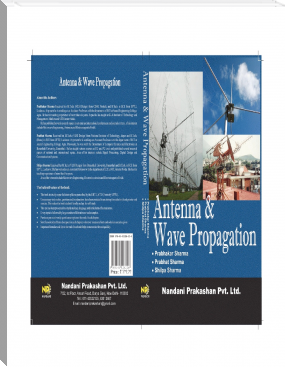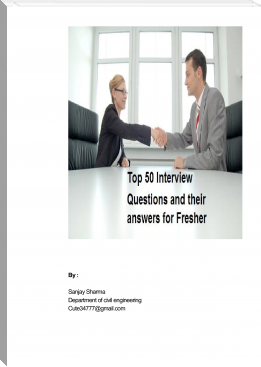A GUIDE FOR FINANCIAL FRAUD INVESTIGATION & PRECAUTION by SHIVANI SHARMA (books to read for beginners .txt) 📕

Read free book «A GUIDE FOR FINANCIAL FRAUD INVESTIGATION & PRECAUTION by SHIVANI SHARMA (books to read for beginners .txt) 📕» - read online or download for free at americanlibrarybooks.com
- Author: SHIVANI SHARMA
Read book online «A GUIDE FOR FINANCIAL FRAUD INVESTIGATION & PRECAUTION by SHIVANI SHARMA (books to read for beginners .txt) 📕». Author - SHIVANI SHARMA
Tracking[edit]
Since insiders are required to report their trades, others often track these traders, and there is a school of investing that follows the lead of insiders. Following such leads subjects the follower to the risk that an insider is buying specifically to increase investor confidence, or is selling for reasons unrelated to the health of the company (such as a desire to diversify or pay a personal expense).
Legal[edit]
Legal trades by insiders are common,[4] as employees of publicly traded corporations often have stock or stock options. These trades are made public in the United States through Securities and Exchange Commission filings, mainly Form 4.
U.S. SEC Rule 10b5-1 clarified that the prohibition against insider trading does not require proof that an insider actually used material nonpublic information when conducting a trade; possession of such information alone is sufficient to violate the provision, and the SEC would infer that an insider in possession of material nonpublic information used this information when conducting a trade. However, SEC Rule 10b5-1 also created for insiders an affirmative defense if the insider can demonstrate that the trades conducted on behalf of the insider were conducted as part of a pre-existing contract or written binding plan for trading in the future.[17]
For example, if an insider expects to retire after a specific period of time and, as part of retirement planning, the insider has adopted a written binding plan to sell a specific amount of the company's stock every month for two years, and the insider later comes into possession of material nonpublic information about the company, trades based on the original plan might not constitute prohibited insider trading.
United States law[edit]
Until the 21st century and the European Union's market abuse laws, the United States was the leading country in prohibiting insider trading made on the basis of material non-public information.[7] Thomas Newkirk and Melissa Robertson of the U.S. Securities and Exchange Commission (SEC) summarize the development of US insider trading laws.[4] Insider trading has a base offense level of 8, which puts it in Zone A under the U.S. Sentencing Guidelines. This means that first-time offenders are eligible to receive probation rather than incarceration.[18]
Statutory[edit]
U.S. insider trading prohibitions are based on English and American common law prohibitions against fraud. In 1909, well before the Securities Exchange Act was passed, the United States Supreme Court ruled that a corporate director who bought that company's stock when he knew the stock's price was about to increase committed fraud by buying but not disclosing his inside information.
Section 15 of the Securities Act of 1933[19] contained prohibitions of fraud in the sale of securities, later greatly strengthened by the Securities Exchange Act of 1934.[20]
Section 16(b) of the Securities Exchange Act of 1934 prohibits short-swing profits (from any purchases and sales within any six-month period) made by corporate directors, officers, or stockholders owning more than 10% of a firm's shares. Under Section 10(b) of the 1934 Act, SEC Rule 10b-5, prohibits fraud related to securities trading.
The Insider Trading Sanctions Act of 1984 and the Insider Trading and Securities Fraud Enforcement Act of 1988 place penalties for illegal insider trading as high as three times the amount of profit gained or loss avoided from the illegal trading.[21]
SEC regulations[edit]
SEC regulation FD ("Fair Disclosure") requires that if a company intentionally discloses material non-public information to one person, it must simultaneously disclose that information to the public at large. In the case of an unintentional disclosure of material non-public information to one person, the company must make a public disclosure "promptly."[9]:586
Insider trading, or similar practices, are also regulated by the SEC under its rules on takeovers and tender offers under the Williams Act.
Court decisions[edit]
Much of the development of insider trading law has resulted from court decisions.
In 1909, the Supreme Court of the United States ruled in Strong v. Repide[22] that a director who expects to act in a way that affects the value of shares cannot use that knowledge to acquire shares from those who do not know of the expected action. Even though, in general, ordinary relations between directors and shareholders in a business corporation are not of such a fiduciary nature as to make it the duty of a director to disclose to a shareholder general knowledge regarding the value of the shares of the company before he purchases any from a shareholder, some cases involve special facts that impose such duty.
In 1968, the Second Circuit Court of Appeals advanced a "level playing field" theory of insider trading in SEC v. Texas Gulf Sulphur Co.[23] The court stated that anyone in possession of inside information must either disclose the information or refrain from trading. Officers of the Texas Gulf Sulphur Company had used inside information about the discovery of the Kidd Mine to make profits by buying shares and call options on company stock.[24]
In 1984, the Supreme Court of the United States ruled in the case of Dirks v. Securities and Exchange Commission[25] that tippees (receivers of second-hand information) are liable if they had reason to believe that the tipper had breached a fiduciary duty in disclosing confidential information. One such example would be if the tipper received any personal benefit from the disclosure, thereby breaching his or her duty of loyalty to the company. In Dirks, the "tippee" received confidential information from an insider, a former employee of a company. The reason the insider disclosed the information to the tippee, and the reason the tippee disclosed the information to third parties, was to blow the whistle on massive fraud at the company. As a result of the tippee's efforts the fraud was uncovered, and the company went into bankruptcy. But, while the tippee had given the "inside" information to clients who made profits from the information, the U.S. Supreme Court ruled that the tippee could not be held liable under the federal securities laws—for the simple reason that the insider from whom he received the information was not releasing the information for an improper purpose (a personal benefit), but rather for the purpose of exposing the fraud. The Supreme Court ruled that the tippee could not have been aiding and abetting a securities law violation committed by the insider—for the simple reason that no securities law violation had been committed by the insider.
In Dirks, the Supreme Court also defined the concept of "constructive insiders," who are lawyers, investment bankers and others who receive confidential information from a corporation while providing services to the corporation. Constructive insiders are also liable for insider trading violations if the corporation expects the information to remain confidential, since they acquire the fiduciary duties of the true insider.
The next expansion of insider trading liability came in SEC vs. Materia[26] 745 F.2d 197 (2d Cir. 1984), the case that first introduced the misappropriation theory of liability for insider trading. Materia, a financial printing firm proofreader, and clearly not an insider by any definition, was found to have determined the identity of takeover targets based on proofreading tender offer documents during his employment. After a two-week trial, the district court found him liable for insider trading, and the Second Circuit Court of Appeals affirmed holding that the theft of information from an employer, and the use of that information to purchase or sell securities in another entity, constituted a fraud in connection with the purchase or sale of a securities. The misappropriation theory of insider trading was born, and liability further expanded to encompass a larger group of outsiders.
In United States v. Carpenter[27] (1986) the U.S. Supreme Court cited an earlier ruling while unanimously upholding mail and wire fraud convictions for a defendant who received his information from a journalist rather than from the company itself. The journalist R. Foster Winans was also convicted, on the grounds that he had misappropriated information belonging to his employer, the Wall Street Journal. In that widely publicized case, Winans traded in advance of "Heard on the Street" columns appearing in the Journal.[28]
The Court stated in Carpenter: "It is well established, as a general proposition, that a person who acquires special knowledge or information by virtue of a confidential or fiduciary relationship with another is not free to exploit that knowledge or information for his own personal benefit but must account to his principal for any profits derived therefrom."
However, in upholding the securities fraud (insider trading) convictions, the justices were evenly split.
In 1997, the U.S. Supreme Court adopted the misappropriation theory of insider trading in United States v. O'Hagan,[29] 521 U.S. 642, 655 (1997). O'Hagan was a partner in a law firm representing Grand Metropolitan, while it was considering a tender offer for Pillsbury Company. O'Hagan used this inside information by buying call options on Pillsbury stock, resulting in profits of over $4.3 million. O'Hagan claimed that neither he nor his firm owed a fiduciary duty to Pillsbury, so he did not commit fraud by purchasing Pillsbury options.[30]
The Court rejected O'Hagan's arguments and upheld his conviction.
The "misappropriation theory" holds that a person commits fraud "in connection with" a securities transaction and thereby violates 10(b) and Rule 10b-5, when he misappropriates confidential information for securities trading purposes, in breach of a duty owed to the source of the information. Under this theory, a fiduciary's undisclosed, self-serving use of a principal's information to purchase or sell securities, in breach of a duty of loyalty and confidentiality, defrauds the principal of the exclusive use of the information. In lieu of premising liability on a fiduciary relationship between company insider and purchaser or seller of the company's stock, the misappropriation theory premises liability on a fiduciary-turned-trader's deception of those who entrusted him with access to confidential information.
The Court specifically recognized that a corporation's information is its property: "A company's confidential information ... qualifies as property to which the company has a right of exclusive use. The undisclosed misappropriation of such information in violation of a fiduciary duty ... constitutes fraud akin to embezzlement – the fraudulent appropriation to one's own use of the money or goods entrusted to one's care by another."
In 2000, the SEC enacted SEC Rule 10b5-1, which defined trading "on the basis of" inside information as any time a person trades while aware of material nonpublic information. It is no longer a defense for one to say that one would have made the trade anyway. The rule also created an affirmative defense for pre-planned trades.
In 2014, in the case of United States v. Newman,





Comments (0)